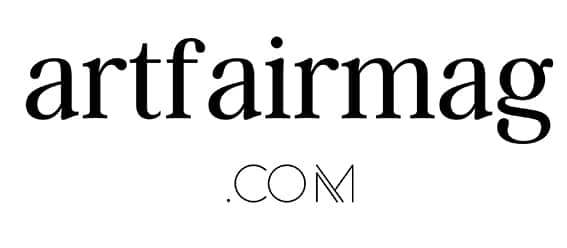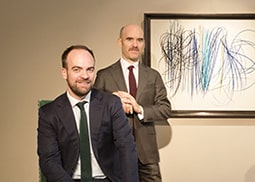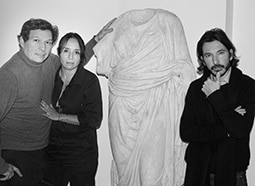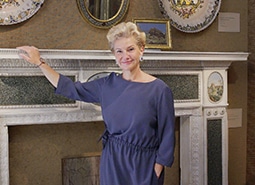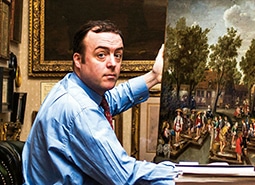Brimo de Laroussilhe
Founded in 1908 by Nicolas Brimo, quickly joined by his brother-in-law Lucien Lascombes de Laroussilhe, the gallery was initially quite eclectic. It presented primitive art, archaeology, 17th century furniture, Islamic art and of course medieval art. When Philippe Carlier took over the gallery in 1991, he decided to focus on the arts of the Middle Ages and the Renaissance. Galerie Brimo de Larousshile has been a member of the CPGA and the SNA since 2008.
Brimo de Laroussilhe
Founded in 1908 by Nicolas Brimo, quickly joined by his brother-in-law Lucien Lascombes de Laroussilhe, the gallery was initially quite eclectic. It presented primitive art, archaeology, 17th century furniture, Islamic art and of course medieval art. When Philippe Carlier took over the gallery in 1991, he decided to focus on the arts of the Middle Ages and the Renaissance. Galerie Brimo de Larousshile has been a member of the CPGA and the SNA since 2008.
Antique Art
7, quai Voltaire
75007 Paris, FR
+ 33 1 42 60 74 76
galerie@brimodl.com
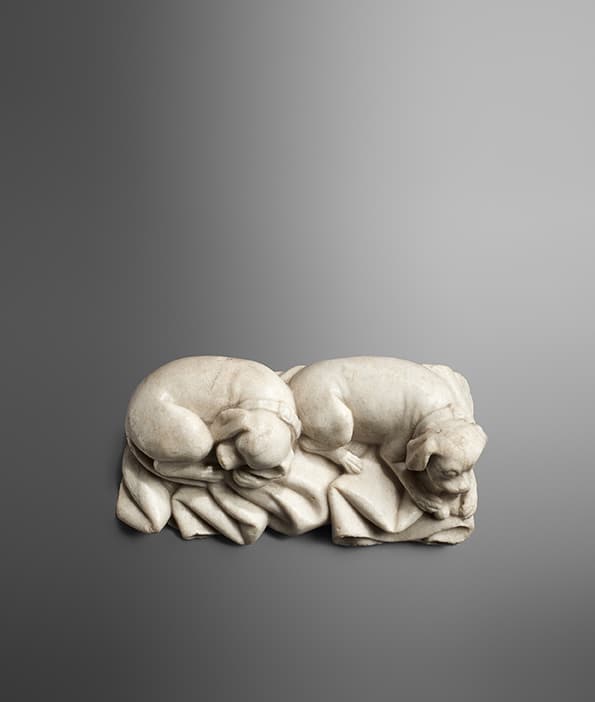
Two dogs lying on a fragment of drapery
From the tomb of the entrails of Blanche de France (died 8 February 1392), daughter of King Charles IV le Bel and Queen Jeanne d’Évreux
Île-de-France, end of the 14th century
Marble
L. 26.5 cm, W. 13 cm, H. 9.5 cm
Provenance:
The Cistercian Abbey of Pont-aux-Dames at Couilly-Pont-aux-Dames (Seine-et-Marne)
All our Interviews

Read all our exclusive interviews with antique, modern, contemporary & primitive art dealers.

Interview with Marie-Amélie Carlier ~ Director
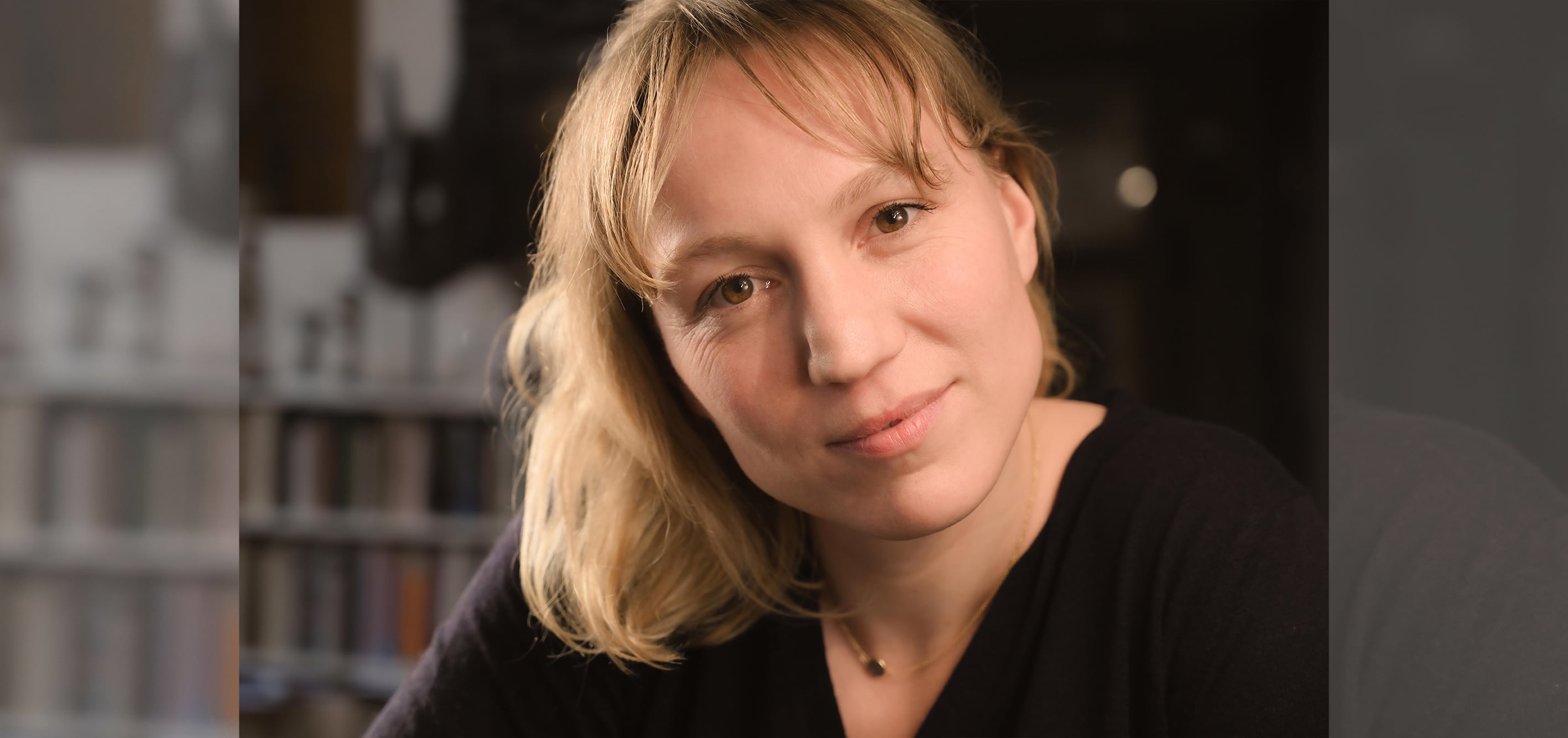
Marie-Amélie Carlier in her gallery, 2020
Interview by Pauline Loeb-Obrenan, founder of artfairmag.
Marie-Amélie Carlier, Philippe’s daughter, joined Brimo de Laroussihle in 2002. She worked hand in hand with her father before taking over the management of the gallery in 2010. She is now alone on board. I had the opportunity to talk with her about her career, medieval art and its collectors, and the digitalization of the art market.
artfairmag: For those who don’t know you, who are you and how did medieval art come to you?
Marie-Amélie Carlier: Being the daughter of an art dealer, I studied Art History at the Sorbonne. As my father was specialized in Medieval art, I decided to direct my university research towards the Florentine Renaissance. This choice was allowing me to look in depth at a field of research that was less natural for me than Medieval art for which I had already received some kind of family training. I joined my father in 2002 to start working with him at Brimo de Laroussilhe. In 2010, he took the decision to retire and to let me run the gallery. I was barely thirty years old when I found myself at the head of a century-old company. The challenge was to maintain the high-quality level of the pieces presented by the gallery.
artfairmag: Your core specialty is European art, from the Middle Ages and the Renaissance. What are the pieces most sought after by your clients?
M-A. C.: The gallery is focused on Medieval and Renaissance art. As a consequence, we are presenting a wide variety of pieces: paintings, sculptures, tapestries, works of art… The gallery’s main criterion of selection is to look for the artistic quality of the piece. For example, you have to keep in mind that in the medieval period, sculptures could be made by craftsmen or by true artists. We try to focus on the second category. I think our clients come to us specifically for this capacity to make the distinction between both.
artfairmag: Speaking about clients, are they more institutions or private collectors? Is there a typical medieval art buyer or a real variety in the profiles?
M-A. C.: We work a lot with institutions. On my side, it might be an easy option: with museums, as specialists of a specific period, we share the same language and a common understanding of the works of art. At the same time, Medieval and Renaissance art are still fascinating for many private collectors. The main difference with the collectors that my father worked with, might be that the ones accumulating only medieval objects are tending to disappear. Nowadays, new collectors who are interested in this period are eclectic collectors: for them, Medieval art has an important place amongst other fields like Modern painting, Archeology, Primitive arts or others. They don’t hesitate to marry different art styles and forms.
“To me, art deserves better than to be treated as a simple commercial product. I know that I may go against the flow, but I have no problem with that.”
artfairmag: Medieval art must be seen in real to reveal its beauty, to create an emotion. With the pandemic, the art world has entered the digital era. How do you feel about this? Do you think you need to reconsider the way you sell?
M-A. C.: I think any work of art deserves to be seen in real to reveal its true beauty and create an actual emotion for the beholder. The Medieval and Renaissance art are no different. Nonetheless, do not hesitate to open a medieval art book, you will be surprised by the beauty of the art reproduced in it. Concerning our participation to the digital world, I am not quite inclined to it. Not because of the period we work on, but because, to me, art deserves better than to be treated as a simple commercial product. I know that I may go against the flow, but I have no problem with that. The gallery doesn’t have an Instagram account and, on our website, we only show a selection of pieces sold to important institutions around the world. It’s a thoughtful choice on my behalf. And the global pandemic hasn’t changed my mind. One of the perks of being a century-old gallery is that it’s not the first crisis that we have to go through.
artfairmag: Fortunately, more and more women occupy a key position in the art market, but this is still quite rare in the world of antique art. Being one of these women, does your success have a special flavour?
M-A. C.: Ten years ago, when my father retired from the business and I started running the gallery, I was barely thirty years old. So I had two important disadvantages in the world of ancient art: being young and a woman. At the beginning, it wasn’t sure at all that I was going to be taken seriously. And if the problem of being young solved itself naturally with time, I still have my share of misogynistic comments in the art market. But with the right people, only the pieces of art matters. Also, in the museums world, there are a lot of female curators who are amongst the most brilliant art historians. There is no reason for the market of ancient art not to catch up. It is a ridiculous cliché to think that women are not qualified to deal with large sums of money.
artfairmag: To conclude this interview, could you present us an artwork you like, that is special to you?
M-A. C.: As an example, I can present you this beautiful element of funerary sculpture in marble, dating back to the end of the fourteenth century, depicting two small dogs lying on a fragment of drapery. Our research has lead us to discover that this element comes from the tomb of the entrails of Blanche de France, daughter of King Charles IV Le Bel and Queen Jeanne d’Evreux. After the death of Blanche de France in 1392, her body was buried in Saint-Denis, her heart was preserved in the Sainte-Croix d’Orléans cathedral and her entrails in the Cistercian Abbey of Pont-aux-Dames, in Couilly-Pont-aux-Dames. Our two marble dogs belong to this last monument. The recumbent effigy of Blanche, unfortunately badly damaged, is preserved at the Cluny museum in Paris.
More Interviews
Brame & Lorenceau
Brame & Lorenceau is a family-run gallery which has built its reputation on French painting and sculpture of the 19th century, and has broaden its speciality with 20th century.
Galerie Chenel
Facing the Louvre museum, Galerie Chenel has a powerful atmosphere with its contemporary setting that truly emphasizes the high-quality antique sculptures that they present.
Alessandra Di Castro
Alessandra Di Castro opened her own gallery in 2009, Piazza di Spagna 4. Its core specialty is the Italian art, from the Renaissance to the Neo-classical period.
Rafael Valls
Opened in 1976 by Rafael Valls and directed by Toby Campbell, the gallery focuses on Old Master Paintings – Dutch, Flemish and Spanish paintings from the 16th to the 19th centuries.
